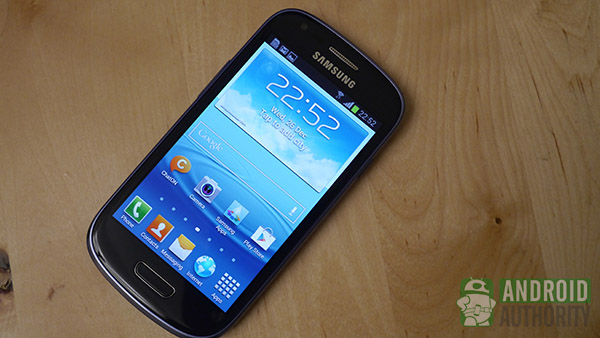

The Samsung Galaxy S3, one of the most important entries in the Galaxy S series, turns eight today. The Galaxy S3 release date was May 29, 2012, building on the hugely popular Galaxy S2 that established Samsung has the biggest rival to Apple's iPhone. The phone sold some 70 million units by 2015 and recorded record profits for Samsung. Today, the company is the industry's biggest manufacturer and the Galaxy S lineup is still one of the best around. But compared to today's flagships, Samsung's early success story seems quite humble.
Compared to today's gigantic smartphones, the Galaxy S3 is petite. It offered a 4.8-inch 720p display and weighed just 133g — perfect for tucking in your pocket, unlike the modern power user class phablets. The Galaxy S20 Ultra, for example, boasts a colossal 6.9-inch display and hefty 220g weight.
It was a fraction of the price, too. The Galaxy S3 price was around $599 unlocked compared to today's $1,399 starting point for the Ultra. Even taking inflation into account that's a much lower launch price than today's flagships. Though, you can grab the regular Galaxy S20 for a much closer $799.99 at current sale prices.
We'd chomp at the bit for a $599 flagship these days, but in 2012 the Galaxy S3's technology wasn't cheap. In fact, the handset pioneered a number of features that you'd still expect from a modern Galaxy S flagship.
Here and now: The best Samsung Galaxy deals
Evolution of phones: What changed?


As funny as it sounds, the Galaxy was a top performer back in its day. The Galaxy S3 specs included a 1.4GHz quad-core Exynos 4412, built on a gargantuan 32nm process, and 1GB or 2GB RAM. This was blazingly fast for its time. Although it's absolutely obliterated by the 12GB RAM and processing performance of the Galaxy S20's tiny 7nm Snapdragon 865 and Exynos 990, not forgetting modern improvement to image, video, graphics, and machine learning processing. Eight years has been a long time in mobile processing technology.
Even so, the Galaxy S3 still boasts some tech we still expect in flagship phones, including aptX audio, an NFC chip, AMOLED display technology, and HDR camera capabilities. Plenty of phones between then and now didn't offer all that tech. The Samsung Galaxy S3 also houses a microSD slot, a headphone jack, and a removable battery — features that have fallen in and out of Samsung's favor over the years. Talk about a nostalgia trip.
Some still pine for the Samsung Galaxy S3's microSD slot, a headphone jack, and a removable battery.
Of course, these days we have in-display fingerprint scanners, multiple cameras setups, wireless charging, and faster Bluetooth, Wi-Fi, and 5G connectivity. The Galaxy S20's hardware package is even more comprehensive, as we'd expect. Perhaps the most notable change of all is the design. The S3's was a looker in its day, but the clunky plastics, neanderthal forehead, chiseled chin, and thick bezels have given way to glass, metal, and a much sleeker profile. In the evolution of phones over the last eight years, we're happy the design has improved so much.

 Loading poll
Loading poll The Galaxy S3 wasn't all great though. It gave us the S Voice "personal assistant," a precursor to Bixby, neither of which ever lived up to their promise. The Galaxy S3 also, arguably, started Samsung down the path towards bloated software, although many liked the phone's range of customization options. After a few questionable years, Samsung's One UI ended up saving the series from an increasingly messy interface.
Old vs new


The modern Galaxy S20 series is obviously a superior hardware package compared to the Galaxy S3. We'd all be pretty alarmed if that wasn't the case. But a retrospective look back shows us just how much, and in some cases how little, has changed over the past eight years.
At its core, the smartphone experience isn't vastly different to eight years ago. All we need is a display, a data connection, and a few popular apps. You could certainly still use the Galaxy S3 today, if it wasn't for the outdated software and associated security issues. However, smartphones have also moved on to tackle new avenues. They're our primary cameras, music players, and increasingly versatile computers used for gaming, work, and more. We expect them to do more, and so we pay more. The wide range of entries in the Galaxy S20 series certainly attempts to cater to the increasingly diverse list of consumer demands, some of which didn't exist in 2012.
Samsung owes much of its success over the past decade to the Galaxy S3. It's already an icon of the mobile industry in a way that modern smartphones just can't seem to match.
Samsung Galaxy S series: A history of the biggest name in Android
from Android Authority https://ift.tt/36DUSJW
via IFTTT
Aucun commentaire:
Enregistrer un commentaire